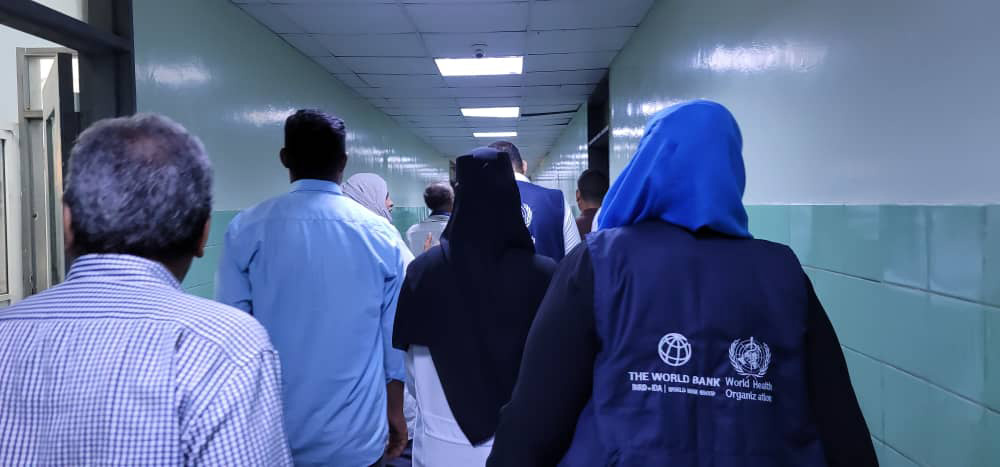 Doaa Shihab, WHO Technical Officer conducts a field visit to Al Jomhoria Hospital in Aden, an EHCP supported facility. Photo credit: WHO Yemen/ A. Abdulqawi21 August 2024, Aden and Sana’a, Yemen – WHO is championing the right to quality health services for everyone, everywhere. In Yemen, despite immense efforts from all partners, this right is yet to be realized.
Doaa Shihab, WHO Technical Officer conducts a field visit to Al Jomhoria Hospital in Aden, an EHCP supported facility. Photo credit: WHO Yemen/ A. Abdulqawi21 August 2024, Aden and Sana’a, Yemen – WHO is championing the right to quality health services for everyone, everywhere. In Yemen, despite immense efforts from all partners, this right is yet to be realized.
People in Yemen have lived through a decade of conflict. Although there have been some moves towards peace, the political, economic and social contexts are still precarious. Standing by WHO in seeking to enhance health services to achieve better population well-being is the World Bank. It has provided WHO with financial support and technical collaboration to ensure that the backbone of Yemen’s health system remains intact.
The partnership between WHO and the World Bank in Yemen began in 2017, with the Emergency Health and Nutrition Project (EHNP). In 2021, EHNP was replaced by the Emergency Human Capital Project (EHCP), which is still ongoing. In addition, the Yemen COVID-19 Response Project (2020–2022) provided life-saving support during the COVID-19 emergency. It also led to lasting health system improvements in Yemen.
As a successor project, EHCP continues essential interventions started under EHNP, including to deliver fuel for electricity, plus oxygen, medicines and other supplies to about 100 hospitals across Yemen. EHCP also aspires to shift efforts across the humanitarian–development–peace nexus, towards building sustainable institutional and individual capacities that strengthen Yemen’s health system and human capital.
EHCP delivers in 3 key areas: health, nutrition, and water, sanitation and hygiene (WASH). WHO implements the project with the United Nations Children’s Fund (UNICEF) and the United Nations Office for Project Services (UNOPS), working with the authorities in Yemen.
Minister of Public Health and Population Dr Qasem Buhaibeh explained: “EHCP really is a lifeline for the health sector, from which millions of Yemenis benefit. To make the most of this project, we are increasingly focusing on enhancing the quality of care and building local capacities so that the gains we have made can be sustained in future.”
Through the project, WHO and UNICEF can support service delivery at more than 2400 health facilities. The agencies have worked with more than 12 000 health professionals to enhance their skills through capacity-building activities.
WHO Representative to Yemen Dr Arturo Pesigan described the impact of the project: “Under EHCP so far, about 13 million people have received essential health, nutrition and WASH services, including 7 million women, 4 million children and 620 000 pregnant women.”
In WHO, interventions under EHCP are implemented within the broader framework of the Yemen–WHO Country Cooperation Strategy 2024–2025. This aligns with the United Nations Yemen Sustainable Development Cooperation Framework 2022–2024.
The funding outlook for Yemen continues to be uncertain, as donors are prioritizing crises in other parts of the world. An injection of additional resources will be critical for EHCP activities to continue. All the while, WHO, UNICEF and UNOPS are working with Yemen’s authorities to identify ways to increase project efficiencies and maximize the sustainable impacts of activities.
Related links
The World Bank and WHO in Yemen, 2017–2022: preventing collapse, building resilience


